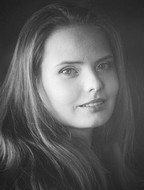Youth figure skating: theoretical and practical training specifics
Фотографии:
ˑ:
Master’s degree student O.O. Shalaeva1
I.V. Strelnikova1
1Moscow State Academy of Physical Education, Malakhovka, Moscow region
Every age period has its own specifics that shall be taken into account in the initiatives to rate the mental and physical progress and health of each athlete so as to design the training process on a more efficient basis. Modern game training methods are also designed on an age-specific basis with due account of the trainees’ mental and physical performance rates as provided by the relevant practical training recommendations. Objective of the study was to develop a preschool figure skaters’ training model with application of the relevant game training tools in the body conditioning and practical ice training practices. The article considers the key theoretical and practical aspects of the new game-driven preschool figure skaters’ training model.
Subject to the study were two preschool groups trained at a private commercial figure skating school, with the Reference Group (RG) trained as required by the traditional training system and Experimental Group (EG) trained under the game-driven preschool figure skaters’ training model. Progress of every group was tested three times per academic year by the ice skills tests and general physical progress tests in November, February and April. The new model were found beneficial as verified by the EG versus RG progress rates provided by the physical progress tests and the attendance and competitive fitness statistics.
Keywords: preschool age, figure skating, game, training model.
References
- Ilyukhina V.A. Psikhofiziologiya funktsionalnykh sostoyaniy i poznavatelnoy deyatelnosti zdorovogo i bolnogo cheloveka Psychophysiology of functional states and cognitive activity of healthy and sick person. Study guide []. St. Petersburg: N-L publ., 2010, 368 p.
- Kamenskaya V.G. Detskaya psikhologiya s elementami psikhofiziologii. Uchebnoe posobie [Child psychology with elements of psychophysiology. Study guide]. 2nd ed., rev., sup. Moscow: FORUM: INFRA-M publ., 2014, 288 p.
- Lyakh V.I. Koordinatsionnye sposobnosti: diagnostika i razvitie [Coordination abilities: diagnostics and development]. Moscow: TVT Divizion publ., 2006, 290 p.
- Syrenskiy V.I., Rodina E.A. Psikhofiziologiya zdorovya: Kniga dlya pedagogov, psikhologov i roditeley [Psychophysiology of Health. Book for educators, psychologists and parents]. St. Petersburg: KARO publ., 2008, 192 p.
- Savchenko Y.I., Soldatova O.G., Shilov S.N. Vozrastnaya fiziologiya (fiziologicheskie osobennosti detey i podrostkov). Uchebnoe posobie dlya studentov ped. vuzov [Developmental physiology (physiological characteristics of children and adolescents). Study guide for students of ped. universities]. Moscow: Hum. Publ. center VLADOS, 2014, 143 p.
- Figurnoe katanie na konkakh. Primernaya programma dlya sistem dopolnitelnogo obrazovaniya detey: detsko-yunosheskikh sportivnykh shkol, spetsializirovannykh detsko-yunosheskikh shkol olimpiyskogo rezerva [Figure skating. Sample program for additional education systems for children: children's and youth sports schools, specialized children's and youth schools of Olympic reserve]. Moscow: Sovetskiy sport publ., 2006, 154 p.
- Podolskaya E.I. Fizicheskoe razvitie detey 2-7 let: syuzhetno-rolevye zanyatiya [Physical development of children 2-7 years: plot-role games]. 2nd ed., rev.. Volgograd: Uchitel publ., 2013, 246 p.


